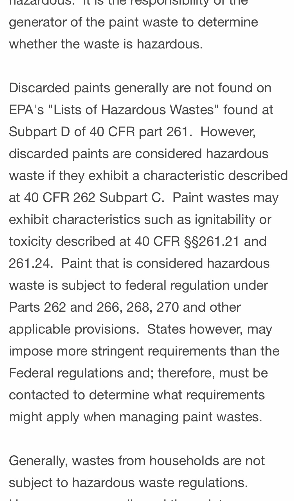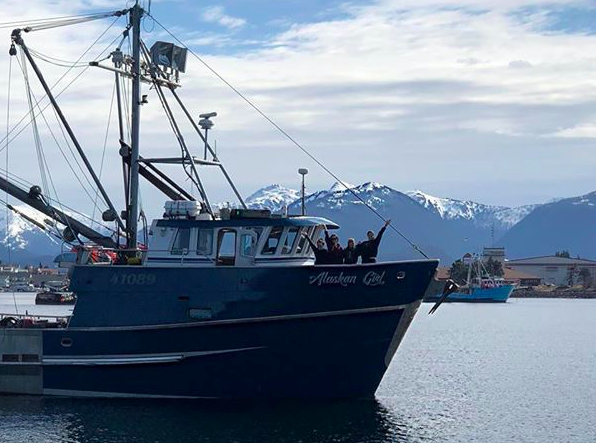Brannon Finney was reading the news reports and the U.S. Justice Department account of the careless fisherwoman who dumped sand overboard and admitted to it, went to court, and was fined for violating the Clean Water Act.
That was her they were writing about.
And yet, the Petersburg woman knew that wasn’t her at all. Not even close.
She’s a reduce-and-reuse type. A recycler. A repurposer. She cares about the environment. And she runs a fishing boat with an all female crew, whom she also cares about.
The way her story was portrayed in the media and by the U.S. Attorney’s Office made it look like she created an EPA superfund site with her 8,000 pounds of sand-and-paint chips.
It was not like that, she says. The media told only the prosecution’s side of the story. Maybe she shouldn’t have taken the plea deal. Maybe she should have fought it.
But Finney, raised in Petersburg and Ketchikan, accepted what was offered by the U.S. Attorney’s Office in Anchorage, and the case was closed last week. Going to trial put too much at risk. What if she lost?
Instead of fighting, she’ll pay $10,000 in fines and perform 40 hours of community service. She’s on probation for 18 months and must publish an apology.
All of that she will do, while she tries to get on with her life and her career in fishing, as well as the rebuilding of her reputation, which she feels has been dragged through the mud.
Finney was told by her lawyer that it was the best deal she could get, since Finney admitted to pouring the sand overboard, and had provided troopers video proof of the activity. She could have been sent to prison, and forced to forfeit her boat, her lawyer told her.
Yet the punishment has been surprisingly harsh for the aspiring young fisherwoman, who donates to good causes and raises money for fishing scholarships for women. The emotional toll from the media coverage, which went all over the West Coast on television, newspapers, and on the web, has taken an unexpectedly heavy hit on her psyche. She lost one of her apparel sponsorships already: Patagonia, the outdoor apparel line with a brand identity of “clean environment,” abandoned her. She worries how the negative coverage will affect her future in fishing.
Here’s how it unfolded, the side of the story that was not told by the news media:
Two years ago, Finney was repainting her fishing vessel Alaskan Girl at a shipyard in Wrangell. She used sand to blast off the old paint, as is custom, and she ended up with a mixture of paint and sand, which, according to her research, was not toxic.

Finney and her crew loaded the sand on her boat and headed home to Petersburg, where she intended to give it to her mother for some fill for her property.
She said the sand with paint isn’t toxic, she’d been texting with her mom about how they could use the sand on her property. In Petersburg, sand is a valuable commodity and Finney had hoped to repurpose the material into something useful around her mom’s house. People use this material for horse shoe pits and landscaping all the time.
But time got away from Finney, and she was due on the fishing grounds, where she was contracted to be a tender to the fishing fleet. It was her first year at tendering.
Instead of taking the sand to Petersburg, she and her crew released the sand into the water between Petersburg and Wrangell. Because it was not toxic, they enjoyed the process of sending eight tons of sand to the bottom of Sumner Strait, sand that contained maybe 15 gallons of paint chips. They were careful not to let any plastic from the bags get into the water and celebrated their success in completing the project safely.
When Finney arrived at the dock in her home town of Peterburg, a Wildlife Trooper asked her where the sand was. He had received a complaint that she had left the Wrangell shipyard with it.
Finney told the trooper that they had dumped the sand. A video of the event was captured by a reality television camera crew that was onboard, because a producer was thinking about doing a show about the F/V Alaskan Girl and Finney and her crew. Finney thought she’d give the show a go; a show about an all-woman fishing boat could serve as a good example for young women, showing them a possible life goal other than “Teen Mom.”
Finney readily explained what she did. It’s sand, she said. People use stuff like this for sandboxes for their kids. The paint is not metal-based. No lead. Everything she’d researched showed it to be environmentally safe.
But the regulators found an easy target for her violation of the Clean Water Act:
“Along with Finney and two crewmembers, a cameraman was also on board the F/V Alaskan Girl, filming for a possible cable TV reality show. Video footage taken during the trip from Wrangell to Petersburg captured one of the brailer bags hanging overboard the vessel while two crewmembers on board sliced through the bag with a knife. Afterwards, black sandy waste spilled from the sliced bag into the water, while at least one of the crew audibly cheered,” the U.S. Attorney’s Office wrote.
Of course, it was black sand from Wrangell and it was knowingly dumped into Sumner Strait near Wrangell. Sand that is black is not sand that is dirty. It’s just black sand.

Finney said she was told by officials that there were other regulations. These she didn’t know about and that were not listed on her “dumping placard,” which is a Coast Guard set of rules that fishers follow. Her dumping placard, it turned out, was out of date.
“We get an updated Coast Guard approval every five years,” she said.
“I dumped nonhazardous material, and I was told by the prosecutor if I didn’t agree to the terms of the plea deal, I’d face multiple felonies and they’d take away my boat. Instead of literally ruining everything in my life and taking the chance that I was wrong somehow, that I’d lose in court, I figured a $10,000 fine was OK, and I’d do the 40 hours of community service and it would be over.”
But the media got ahold of it and only reported what the prosecution was saying. And it made her look like a monster.
“They said I dumped it to avoid a disposal fee, and that is absolutely not the case. The paint job was $60,000. I’m not going to break the law to avoid a $1,400 disposal fee. The media reported that a month before I even got to court. They create a public opinion before you get in front of a judge,” Finney said.
“I was upset, and talked to my lawyer, and told her it was hitting my career hard, and I wanted to fight it. But she told me this was the best it was going to be and I should be grateful I’m not getting jail time.”
Finney feels that perhaps the federal authorities were making an example of her, because she was an easy target: She told them she did it and showed them the video documentation of what she’d done.
“The punishment is fine. It’s the media spin that is brutal,” she said.
“I gave them everything the court needed to proceed, so they did, but just because you can, doesn’t mean you should. The fact that this even made it to federal court? It was surreal to find myself in that position,” Finney said.
“From the beginning, I have been totally honest about the events that transpired, I had a film crew on board and let him roll the whole thing,” Finney wrote online. “I didn’t have him delete it because I thought it proved our intentions were good, we cut open the bags carefully to prevent getting any plastic in the ocean. Literally to prevent pollution. I didn’t try to hide it because I thought I was within the law. As someone who recycles, conserves, reuses, and goes green whenever possible, I’d never intentionally discharge a ‘pollutant.'”
“The penalty seemed fair to me,” Finney wrote online. “But I had no idea then that it would be publicly reported on so one sidedly. I think I would have fought harder if I had known my name and my boat would be shamed like this. I use my boat to bring supplies to firefighters, and remote communities, to transport recycling for local businesses, to employ and provide scholarships to women in fishing, to start a “teach a girl to fish” program bringing young adults out to Learn about the industry, to donate to those in need.
“I have learned from it and will accept the consequences of my mistake, but I’m not the villain that the prosecution has made me out to be. I hope my negligence can be forgiven and learned from in the future.”
Finney is now 32. Her misadventure in sandblasting her boat’s hull occurred two years ago, but how she was treated by the media will last a long time in her psyche.
Someday it will be a story for the grandkids, but for now, it’s back to work for the Alaskan Girl and her crew. Work might be just what the doctor ordered to help Finney rebuild in her the sense of who she is, not who she was made out to be.

SEARCH ADN? or Seward paper for the Seward shipyard and someone using the sand waste for fill in their yard. EPA got all wound up. Was expensive
Good job to the Wildlife Trooper and to Patagonia for dropping her sponsorship, I am sure Yvon Chouinard did not see any reason why this should have occurred…
Calling the material “non toxic” is a stretch.
How old is the boat?
Did the old paint contain Lead?
Either way, there was no reason to remove the 8 tons of contaminated sand from the shipyard (other than not paying the disposal fee)…obviously her mother did not want it in her yard either.
She said there was no lead in the paint. Question: Where does the Wrangell shipyard dispose of this sand, and does it drain into the water anywhere?
Sorry for my skepticism, but unless the removed paint was fairly new…there is a high chance that the marine paint contained Lead.
“Although most marine paints available today for recreational boats do not contain lead, many boats have been painted with a paint that is high in lead. If boating enthusiasts doing repairs or maintenance disturb these paints in backyards or garages, or if old tins of paint are used, these marine paints can create health hazards…
White lead paints are also commonly found.
Deteriorating paint that is flaking or chalking is of special concern…”
http://www.environment.gov.au/protection/chemicals-management/lead/lead-in-marine-paints
Steve,
What does the Australian government have to do with a lady dumping sand with some non-toxic paint chips in the water near Petersburg?
The next thing captain Finney needs to sandblast, is her attorney.
Eventually all that nice sand will probably provide a perfect habitat for some endangered species which will be protected by heavy fines…
Meanwhile in Fukishima, Japan………………………………..
Why have a film crew on board filming this act? That was really dumb. She gave them the evidence that would be used to convict her. Next time, do what the rest of the fleet captains do…take the sandblasted material out to sea and dump it overboard in darkness.
When you litter you need to pay. Stupid comes to mind.
Humans are the highest evolved species on the planet. Anything they do is just as ‘natural’ as any other species. Unless there is some sort of environmental ‘original sin’. If God doesn’t exist, we can’t save the planet.